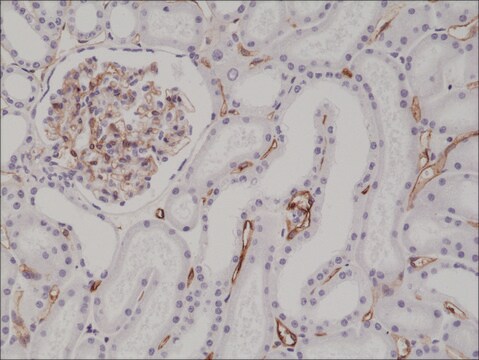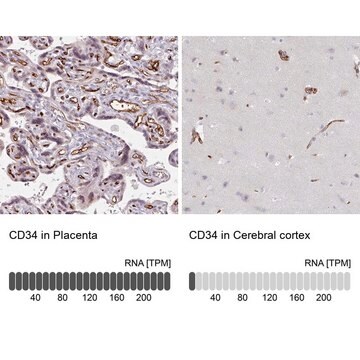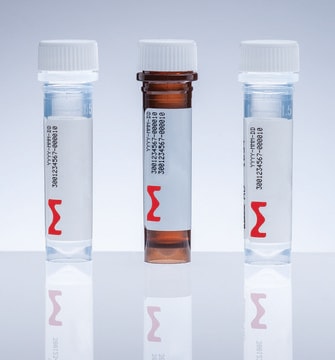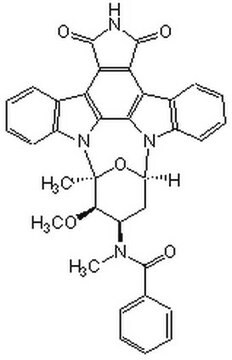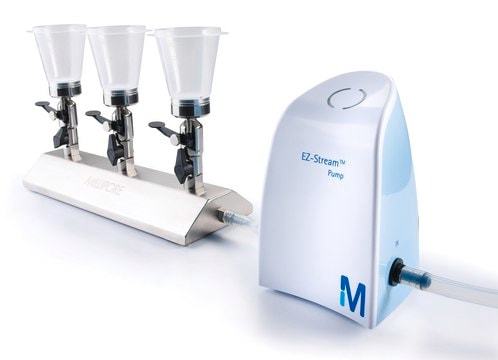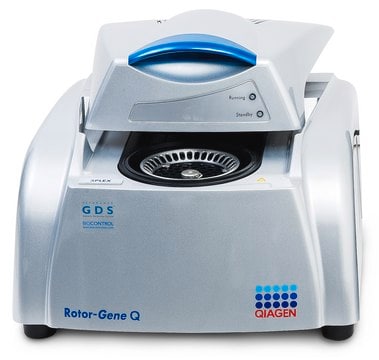CBL496-I
Przeciwciało anty-CD34, klon QBEnd/10
clone QBEnd/10, from mouse
Synonim(y):
Hematopoietic progenitor cell antigen CD34
About This Item
Polecane produkty
pochodzenie biologiczne
mouse
forma przeciwciała
purified immunoglobulin
rodzaj przeciwciała
primary antibodies
klon
QBEnd/10, monoclonal
reaktywność gatunkowa
human, monkey
opakowanie
antibody small pack of 25 μL
metody
electron microscopy: suitable
flow cytometry: suitable
immunofluorescence: suitable
immunohistochemistry: suitable (paraffin)
western blot: suitable
izotyp
IgG1λ
numer dostępu NCBI
numer dostępu UniProt
docelowa modyfikacja potranslacyjna
unmodified
informacje o genach
human ... CD34(947)
Powiązane kategorie
Opis ogólny
Specyficzność
Immunogen
Zastosowanie
Analiza sortowania komórek aktywowanego fluorescencją (FACS): Reprezentatywna partia została użyta do sortowania komórek CD34+ ze szpiku kostnego. (de Bock, C.E., et. al. (2012). Leukemia. 26(5):918-26).
Analiza immunofluorescencyjna: Reprezentatywna partia wykryła CD34 w zastosowaniach immunofluorescencji (Miki, T., et. al. (2010). Mol Cancer Res. 8(5):665-76).
Analiza mikroskopii elektronowej: Reprezentatywna partia wykryła CD34 w zastosowaniach mikroskopii elektronowej (Fina, L., et. al. (1990). Blood. 75(12):2417-26).
Analiza immunohistochemiczna: Reprezentatywna partia wykryła CD34 w zastosowaniach immunohistochemicznych (Engler, J.R., et. al. (2012). PLoS One. 7(8):e43339; Fina, L., et. al. (1990). Blood. 75(12):2417-26).
Analiza cytometrii przepływowej: Reprezentatywna partia wykryła CD34 w zastosowaniach cytometrii przepływowej (de Bock, C.E., et. al. (2012). Leukemia. 26(5):918-26; Fina, L., et. al. (1990). Blood. 75(12):2417-26).
Analiza Western Blotting: Reprezentatywna partia wykryła CD34 w zastosowaniach Western Blotting (Fina, L., et. al. (1990). Blood. 75(12):2417-26).
Jakość
Immunohistochemistry (Paraffin) Analysis: A 1:250 dilution of this antibody detected CD34 in human kidney tissue sections.
Opis wartości docelowych
Postać fizyczna
Inne uwagi
Nie możesz znaleźć właściwego produktu?
Wypróbuj nasz Narzędzie selektora produktów.
Certyfikaty analizy (CoA)
Poszukaj Certyfikaty analizy (CoA), wpisując numer partii/serii produktów. Numery serii i partii można znaleźć na etykiecie produktu po słowach „seria” lub „partia”.
Masz już ten produkt?
Dokumenty związane z niedawno zakupionymi produktami zostały zamieszczone w Bibliotece dokumentów.
Nasz zespół naukowców ma doświadczenie we wszystkich obszarach badań, w tym w naukach przyrodniczych, materiałoznawstwie, syntezie chemicznej, chromatografii, analityce i wielu innych dziedzinach.
Skontaktuj się z zespołem ds. pomocy technicznej
